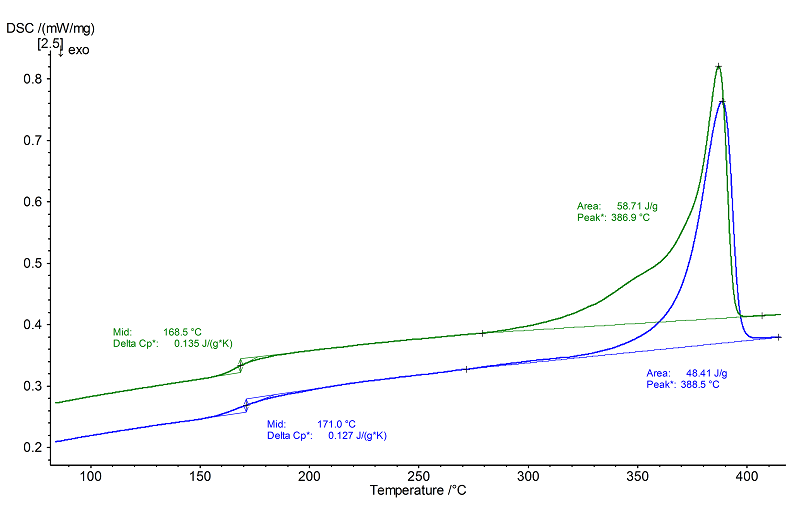PEKEKK: Polyacryletherketone- etherketoneketone
- Short Name
- PEKEKK
- Name
- Polyacryletherketone- etherketoneketone
- Group
- HTRTP - High-Temperature Resistant Thermoplastics
- General Properties
- Chemical Formula
- Structural Formula
-

Properties
- Glass Transition Temperature
- 165 to 175 °C
- Melting Temperature
- 380 to 390 °C
- Melting Enthalpy
- 60 J/g
- Decomposition Temperature
- 580 to 600 °C
- Young's Modulus
- 4300 MPa
- Coefficient of Linear Thermal Expansion
- 45 *10¯6/K
- Specific Heat Capacity
- - J/(g*K)
- Thermal Conductivity
- 0.29 W/(m*K)
- Density
- 1.3 g/cm³
- Morphology
- Semi-crystalline thermoplastic
- General properties
- Good mechanical properties. High temperature and heat resistance. Good chemical resistance. Low humidity absorption. Good electrical insulation. Good dimensional stability
- Processing
- Extrusion, injection molding
- Applications
- Mechanical engineering. Transportation and conveyor technique. Automobile industry. Chemical plant construction
Internet Links
NETZSCH Measurements
- Instrument
- DSC 204 F1 Phoenix®
- Sample Mass
- 10.69 mg
- Isothermal Phase
- 3 min/5 min
- Heating/Colling Rates
- 10 K/min
- Crucible
- Al, pierced
- Atmosphere
- N2 (40 ml/min)

Evaluation
Since the polymer is semi-crystalline, it exhibits both a melting transition and a glass transition. The glass transition for the example occurred at approx. 168°C (2nd heating, green, midpoint), and the melting transition at 387°C (peak temperature,
2nd heating).
The melting enthalpy increased from 47 J/g in the 1st heating (blue) to approx. 59 J/g in the 2nd heating, reflecting an increase in the crystalline content of the polymer. The height of the glass transition step (Δcp), normally a measure of the
amorphous content in the sample, remained nearly constant. The small shift of the melting temperature (peak temperature) between the 1st and 2nd heatings of nearly 2 K is due to the better contact between the sample and crucible bottom after the first melting.
2nd heating).
The melting enthalpy increased from 47 J/g in the 1st heating (blue) to approx. 59 J/g in the 2nd heating, reflecting an increase in the crystalline content of the polymer. The height of the glass transition step (Δcp), normally a measure of the
amorphous content in the sample, remained nearly constant. The small shift of the melting temperature (peak temperature) between the 1st and 2nd heatings of nearly 2 K is due to the better contact between the sample and crucible bottom after the first melting.